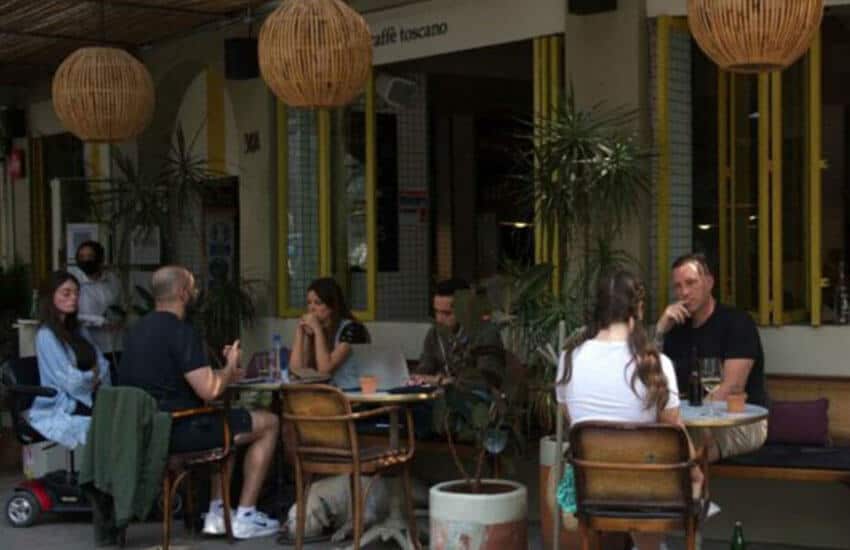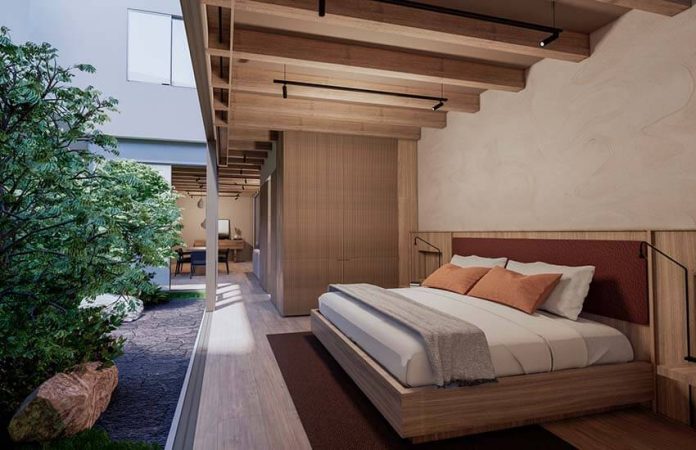Foreigners — especially United States citizens – are changing the face of some Mexico City neighborhoods where they have recently settled and from which they work remotely.
Large numbers of mainly young Americans have moved to the capital during the pandemic, taking advantage of flexible work arrangements that allow them to live in Mexico while earning in dollars. According to the remote worker website Nomad List, a resource for digital nomads that claims over 10,000 paid subscribers, Mexico City is No. 5 on one of its lists of the fastest-growing remote work hubs in the last five years.
In 2021, once the COVID-19 pandemic began, Nomad List says the number of its subscribers who checked in from Mexico City grew 125% and grew 65% more in 2022.
According to the site, the pandemic influenced numbers in 2020 and 2021.

“For example, places with less travel restrictions (like Mexico) have grown faster for that reason, amongst others,” it said.
Many of these foreigners who are staying temporarily in Mexico City now live in trendy, central neighborhoods such as Condesa, Roma and Juárez, where renting an apartment is out of reach of most Mexicans but comparatively cheap for Americans armed with dólares.
A Milenio newspaper report noted that the sight of U.S. citizens at businesses such as restaurants and cafes in those neighborhoods, as well as Santa María la Ribera and the historic center – all of which are in the central Cuauhtémoc borough – is now commonplace.
It also said that businesses, especially those in Condesa, are adapting in order to cater to the large number of gringos living in the local area.
Long-established barberías now have “barber shop” signs for English-speaking eyes. Restaurants have English menus, and yoga studios offer bilingual classes, Milenio said. The self-proclaimed “healthy” restaurant Mora Mora, where “clean & green bowls” and “superfood sandwiches” are on the menu; the restaurant Ojo de Agua, where fresh food and free WiFi are on offer; and the Condesa branch of the cafebrería (cafe/bookstore) El Péndulo are all popular places among Americans who left the U.S. for a variety of reasons, including high living costs and the impact of the pandemic on their social lives.
An El Péndulo waiter told Milenio that at least half of all customers in recent months have been gringos. “The bad thing is that they don’t leave very good tips,” he said.
In an interview with Milenio, the president of the Mexico City branch of the Mexican Association of Real Estate Professionals said the arrival of Americans and the consequent influx of dollars has helped the rental market recover from a pandemic-induced downturn.
“They don’t have a problem paying 30,000, 40,000 or even 50,0000 pesos rent [per month],” Laura Zazueta said.

At the current exchange rate (one greenback buys about 20.5 pesos), 50,000 pesos is $2,435. That’s almost 10 times Mexico’s monthly minimum wage, which is currently set at just under 173 pesos (about US $8.50) per day.
Zazueta acknowledged that Condesa, Roma, Juárez and the historic center are the most popular neighborhoods among foreigners, although some have ventured outside the Cuauhtémoc borough “bubble” to live in places such as swanky Polanco and nearby Anzures, both of which are in the Miguel Hidalgo borough.
Americans like neighborhoods such as Condesa and Roma because of the art deco architecture and the wide variety of dining options, she said. “[Roma] is also very attractive because the movie Roma was filmed there,” Zazueta said.
The industry group president said that account managers, bankers and office employees of multinational companies are among the foreigners moving to Mexico City. “They install themselves here because it’s not at all expensive for them, due to the exchange rate,” Zazueta said.
Most foreigners living in Mexico while working remotely for foreign companies enter the country as tourists, meaning that they shouldn’t stay here uninterruptedly for longer than six months, provided they were given a 180-day permit. Getting a 180-day permit was once all but guaranteed, but many travelers have reported that they were allowed 30 or fewer days.
While Americans and other foreigners living and working in the capital inject significant quantities of money into the local economy, their presence is far from welcomed by all Mexicans.
When a visitor from Austin tweeted in February that remote working in Mexico City “is truly magical,” a storm of indignation among Mexico City residents about remote workers from the U.S. pushing locals out of their own neighborhoods ensued online, Mexico News Daily reported earlier this year in a story about a Roma sandwich business’s battle against the seemingly unstoppable forces of gentrification.
With reports from Milenio
